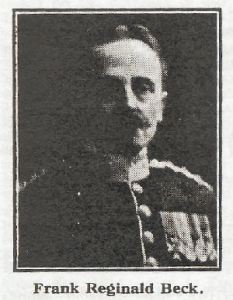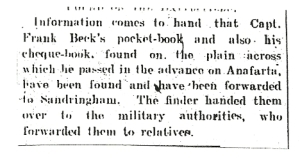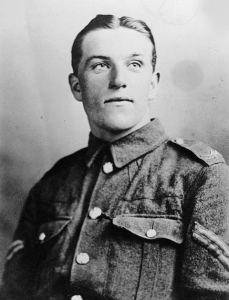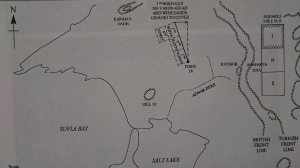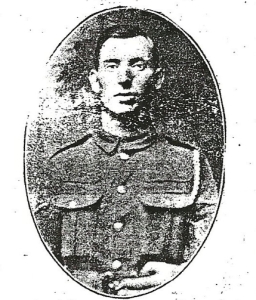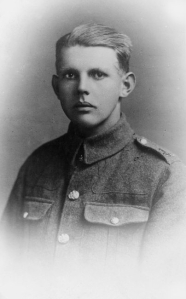Part 1
Introduction
This was the first of a series of blogs that I wrote as we approached the 100th Anniversary of the 1/5th Battalion Norfolk Regiment going into action on 12th August 1915 at Kuchuck Anafarta Ova at Gallipoli.
I have written about this battalion in both my books but evidence is continually popping up. So supported by further research I hoped to try and dispel many of the myths attached to the battalion including their alleged ‘disappearance into a cloud of smoke’.
This first part of the story is designed to introduce you to the various myths that surround the battalion and to bring you up to the point when they embarked for Gallipoli.
Please note that virtually all of the accounts I use in these blogs come from men who were there at the time of the battalion going over the top on 12th August 1915 and were interviewed soon afterwards. Where I have not used accounts from 1915/16 I have either sourced the account or have explained by rationale behind it. All images are from my own archive.
And so we begin…
War always brings tragedy and some incidents are more tragic than others. In the case of the 1/5th Battalion it is even more tragic as they have become part of a mystery that has led to books being written about the subject and even a TV adaptation being made in 1999. There have also been numerous stories in articles in newspapers, magazines and on the Internet.
And even more woefully the latest book published this year, 2020, has followed some of the old myths and provided nothing new in the way of the evidence I have provided in these blogs. So, unfortunately, virtually all of them provide misinformation including some very up to date websites that follow the same pattern with their name.
This brings me onto the main points of their story which tend to fall into four categories which are.
1. They were known as the Sandringham Company, Battalion or Regiment.
2. A despatch published on 6th January 1916 by Sir Ian Hamilton on the Gallipoli Campaign, and after the 1/5th Battalion went over top on 12th August 1915, noted that they were lost, it stated,
‘Nothing more was ever seen or heard of any of them. They charged into the forest and were lost to sight or sound. Not one of them ever came back.’
3. That they were abducted by aliens.
4. They were executed by the Turks.
In the book by Nigel McCrery, and the TV adaptation of that book produced by Prince Edward’s film company, entitled ‘All the King’s Men’, it depicts a highly charged solution to the mysteries surrounding the battalion which centred on men from the Royal Estate at Sandringham who were lost on 12th August 1915.
All of these theories will be looked at as we go along except the ‘Abducted by Aliens’ drivel. If you want to read about that then please visit the websites that try to push that point with all of their inaccuracies!
So let’s look at the first myth that they were known as the Sandringham Company, the Sandringham Battalion or the Sandringham Regiment.
This can be explained in the way that the unit was formed and then reformed. Between 1905 & 1912 the Secretary of State, Lord Haldane, set about reorganising what was at that point called the pre-1908 Militia and Volunteer Force, which were separate entities. Therefore, on 1 April 1908 they became the Special Reserve and Territorial Force respectively. The Territorial Force was designed to be a home force but could be used for overseas service should any crisis erupt in the Empire and Norfolk raised three infantry battalions, the 1/4th, 1/5th & 1/6th (Cyclists) as well as one cavalry battalion, the King’s Own Royal Regiment of Norfolk Yeomanry. Various units that would support the main battalions such as field ambulance, artillery and service corps were also formed.
These relatively new units of the British Army were all made up of volunteers who trained in their spare time and their role had never resulted in them being sent overseas until WWI broke out. At that time these units were asked whether they wished to see active service and for the most part men volunteered to do just that.
All of the three main TF battalions had a specific area where they drew their men. The 1/6th Battalion recruited from all over Norfolk, the 1/4th recruited, for the most part, from the southern part, including Norwich, and the 1/5th from the northern swathe which spanned from Great Yarmouth to Hilgay and Dereham. So from this you will see that the 1/5th Norfolks did not just recruit from Sandringham.
Companies were raised by town and for the case of the 1/5th Battalion it is important that we must list where this occurred.
‘A’ Company: Recruited from King’s Lynn with detachments at Hunstanton and Thornham.
‘B’ Company: Recruited from Downham Market with a detachment at Hilgay.
‘C’ Company: Recruited from Fakenham with detachments at Aylsham and Wells.
‘D’ Company & Battalion HQ: Recruited from East Dereham with a detachment at Swaffham.
‘E’ Company: Recruited from Sandringham.
‘F’ Company: Recruited from Cromer with detachments at Holt, Melton Constable and Sheringham.
‘G’ Company: Recruited from Great Yarmouth.
‘H’ Company: Recruited from North Walsham with a detachment from Great Yarmouth.
We will come back to this in a little while.
When war was declared on 4th August 1914 the 1/5th Norfolks mobilised along with the rest of the Norfolk and Suffolk Brigade, of the East Anglian Division, which also included the 1/4th Norfolks and the 1/4th & 1/5th Suffolk Regiment, although the 1/4th Suffolks were sent to the Western Front on 9th November 1914.
The battalion concentrated their H.Q. at Dereham the next day and then moved to Billericay soon afterwards. But on 17th August 1914 the battalion transferred to Colchester.
On 14th November 1914 the 1/5th Norfolks received a new C.O. in the guise of Colonel Sir Horace George Proctor-Beauchamp. Colonel Proctor-Beauchamp had never served as an infantryman, having been a cavalryman all his life. This would have a major impact on the battalion from the start and would have major consequences for an entire brigade on the day they first went into action.
‘Colonel Proctor-Beauchamp was appointed to command the 1/5th Norfolks aged 52 he had served with the 20th Hussars; a cavalryman through and through, he had never served as an infantry commander. It was, at best, an unfortunate appointment. He had not served for 8 years.’
From correspondence with the Norfolk Regiment historian Dick Rayner in 2012
Now back to the Sandringham issue.
The active service E Company from Sandringham merged with another company in February 1915, becoming ‘C’ Company (King’s Company). The reason for this was so that the TF battalions could then fall into line with regular battalions by having four Rifle Companies and a HQ Company.
As Dick Rayner rightly points out,
‘February 8th 1915, a major reform. Conversion to a 4 company battalion. The Sandringham Company ceased to exist.’
From correspondence with Dick Rayner in 2010
That really important piece of information, e.g. their name changed to the King’s Company, is completely omitted in the new book. This is terrible.
The Norfolk Regiment historian Dick Rayner believes that the main issue with their name more than likely arose when the 50th Anniversary in 1965 came round. Here references to the Sandringham Company, Battalion and Regiment first started to emerge to a wider audience. Especially when a story materialised that year where three New Zealand sappers claimed to have seen a British regiment marching up a sunken road to be swallowed up in a cloud.
However, as we will see, very little in the way of the reference to ‘Sandringham’ is ever mentioned in contemporary accounts from 1915 and 1916.
So, in a nutshell, all reference to Sandringham should really be struck off any type of account(s) when talking about the battalion when they are looked at from their service in Gallipoli. And yet that name still remains! And frustratingly the most recent book does not even mention the word King’s and Company in its narrative but just goes on to try and justify why they should just be called the Sandringham Company.
This, to me, is a travesty and a really bad way of using a privilege. By that I mean it smacks to me of, ‘I’m a historian so I can write what I want’. But if you do that you must tell the story fully with all the available evidence. This does not happen in the new book.
In November 1914 the battalion was inspected by King George V and by March 1915 they were on the move again, this time moving to Bury St Edmunds, with the 1/8th Hampshires also joining them from the Isle of Wight. On 21st May 1915 the East Anglian Division was re-designated the 54th (East Anglian) Division, with the 1/5th Battalion becoming part of the 163rd Brigade which also included their sister battalion the 1/4th Norfolks along with the 1/5th Suffolks and the 1/8th Hampshires.
On 20th May 1915 they moved to Watford and underwent a final period of intensive training. By this time Proctor-Beauchamp had already lost the confidence of his officers and men. Dick Rayner points this out as to what was thought of him, prior to the battalion sailing for Gallipoli, he states,
‘…Manoeuvres became more complex, tiring and monotonous, the hardening up process began to tell on everyone. Not least, by all accounts, on Colonel Beauchamp. An unpublished record refers to ill-tempered outbursts directed at officers and men. Battalion and company exercises exposed his shortcomings and did nothing to improve morale. Confidence in his ability reached a low ebb, with much murmuring in the officers’ mess.’
If this is correct, and I have no reason to doubt this, then it does not instil confidence in me at Proctor-Beauchamp’s abilities to command and this has a bearing on what would happen to them on 12th August 1915. However, having trained for a number of months, the battalion left Watford by train for Liverpool on 29th July 1915 and embarked on the luxury liner HMT Aquitania. They sailed from there at 2300hrs on 30th July 1915 bound for the Dardanelles along with the rest of the 163rd Brigade, half the 162 Brigade and the 54th (East Anglian) Divisional HQ.
In the next part of this series of blogs we will look at the 1/5th Norfolks initial landing at Gallipoli and their initial preparations for going over the top on 12th August 1915.





